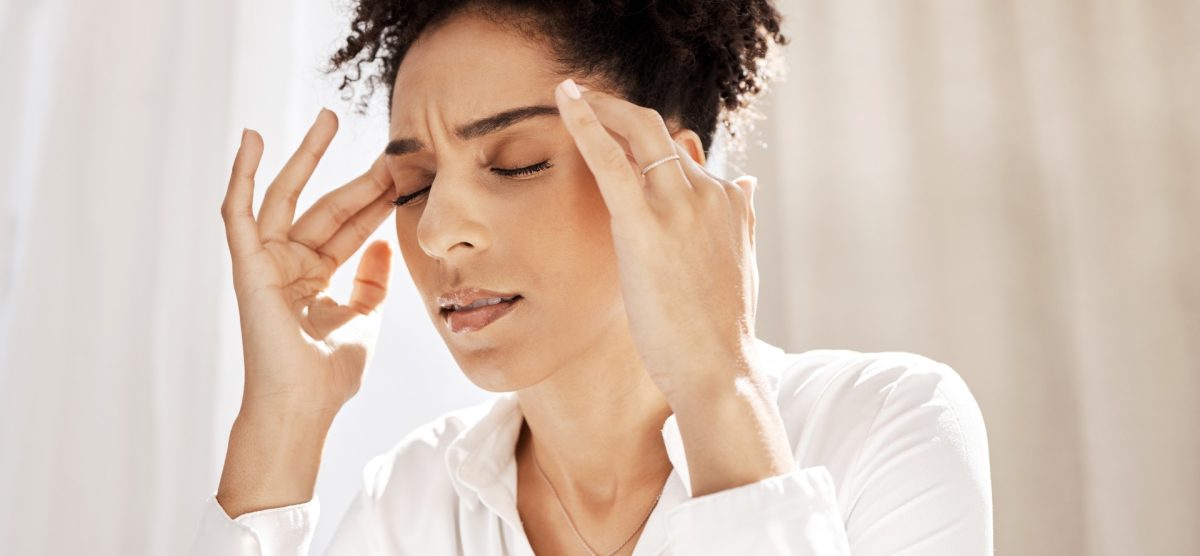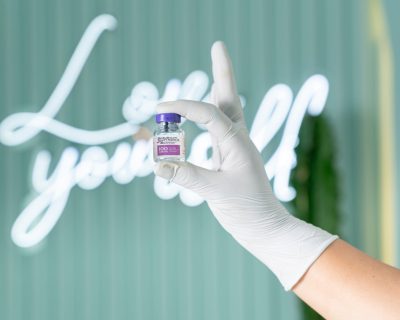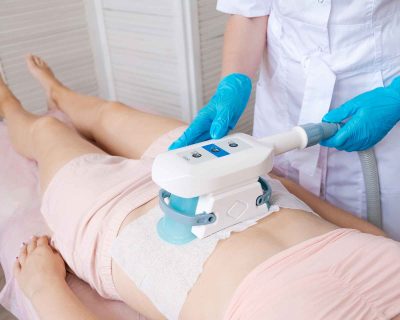Blog

How Botox can Help Prevent Migraines
Migraines are a debilitating neurological condition that affects millions of people worldwide. Characterized by severe headaches, often accompanied by nausea, vomiting, and sensitivity to light and sound, migraines can significantly reduce a person’s quality of life. While there is no one-size-fits-all solution for migraine prevention and treatment, Botox has emerged as a promising option for those who suffer from chronic migraines. In this blog post, we will explore how the use of Botoxfor migraines can help prevent migraines and shed light on its mechanisms, benefits, and considerations.
Understanding Migraines
Before delving into the role of Botox in migraine prevention, it’s essential to understand the basics of migraines. Migraines are not merely headaches; they are a complex neurological disorder with various triggers and symptoms. Some common migraine symptoms include:
- Throbbing or pulsating head pain, typically on one side of the head.
- Nausea and vomiting.
- Sensitivity to light (photophobia) and sound (phonophobia).
- Visual disturbances, such as aura, in some cases.
- Aura can manifest as visual disturbances like flashing lights or blind spots.
Migraines can last anywhere from a few hours to several days, making them highly disruptive to daily life. While the exact cause of migraines is still not completely understood, it is believed to involve a combination of genetic, environmental, and neurological factors.
The Role of Botox in Migraine Prevention
Botox, scientifically known as Botulinum toxin, is a potent neurotoxin produced by the bacterium Clostridium botulinum. Its fame initially stemmed from its cosmetic applications in reducing wrinkles and fine lines, but over the years, its therapeutic uses have expanded significantly. One of the most promising applications of Botox lies in its ability to prevent chronic migraines, offering relief to those who endure the debilitating effects of this neurological condition.
To grasp how Botox plays a pivotal role in migraine prevention, it is essential to delve deeper into its mechanism of action and the intricate relationship between migraines and the nervous system.
Reducing Muscle Tension
A common trigger for migraines is muscle tension, especially in the head, neck, and shoulder areas. Stress, poor posture, and clenching of the jaw are often culprits in the buildup of muscle tension. When muscles in these areas remain persistently contracted, they can compress nerves and blood vessels, leading to the initiation and exacerbation of migraines.
Botox, when administered in specific locations surrounding the head and neck, acts as a muscle relaxant. It temporarily inhibits muscle contractions, effectively reducing tension in the targeted areas. By relaxing these muscles, Botox not only alleviates immediate discomfort but also prevents the ongoing buildup of tension that can lead to migraine episodes.
Modulating Pain Signals:
Migraines are characterized by excruciating headache pain that often radiates from one side of the head. This pain is mediated by complex interactions within the nervous system. Nerves transmit pain signals to the brain, where they are perceived as migraine pain. Botox has a unique ability to interfere with this process.
When Botox is injected into specific muscle groups, it inhibits the release of acetylcholine, a neurotransmitter responsible for transmitting signals from nerves to muscles. By interfering with this neurotransmission, Botox effectively disrupts the transmission of pain signals. As a result, the perception of pain associated with migraines is significantly reduced, providing much-needed relief to migraine sufferers.
Reducing Inflammation:
In recent years, research has shed light on the role of inflammation in the development and progression of migraines. Inflammation involves the activation of immune responses and the release of various inflammatory molecules, which can sensitize pain receptors and trigger migraine attacks.
Botox may possess anti-inflammatory properties that contribute to its efficacy in migraine prevention. While the exact mechanisms are still under investigation, it is believed that Botox can dampen the inflammatory response at the cellular level. By reducing inflammation, Botox helps mitigate the processes that can lead to migraine initiation and propagation.
It is important to note that Botox for migraine prevention is a highly targeted therapy. It does not affect the entire body but rather acts locally at the injection sites. This targeted approach minimizes the risk of widespread side effects while maximizing the therapeutic benefits for migraine sufferers.
Clinical Evidence for Botox in Migraine Prevention
The use of Botox for migraine prevention has been extensively studied and has gained approval from regulatory authorities in many countries, including the U.S. and Europe. Clinical trials have shown promising results:
- FDA Approval: In 2010, the U.S. Food and Drug Administration (FDA) approved the use of Botox for the prevention of chronic migraines in adults. Chronic migraines are defined as headaches occurring on 15 or more days per month for at least three months, with at least eight of those days featuring a migraine headache.
- Efficacy: Multiple clinical trials have demonstrated that Botox injections can significantly reduce the frequency and severity of migraines in chronic migraine sufferers. Some studies have reported a 50% or greater reduction in the number of migraine days per month.
- Duration of Effect: The effects of Botox in migraine prevention are not permanent but can last for several months. Typically, patients receive Botox injections every 12 weeks to maintain the benefits.
Benefits of Botox for Migraine Prevention
The use of Botox in migraine prevention offers a range of significant benefits for individuals who experience chronic migraines. As a therapeutic option, Botox not only provides relief from the debilitating symptoms of migraines but also enhances the overall quality of life for those who suffer from this neurological condition. Here are some key advantages of Botox for migraine prevention:
- Non-Invasive Treatment:Botox injections are relatively non-invasive compared to many other medical treatments for migraines. Unlike surgical interventions or implantable devices, Botox injections are administered in a doctor’s office setting, and they do not require general anesthesia. This means that patients can undergo Botox treatment without the need for extensive hospital stays or recovery periods.
- Reduced Reliance on Medication: Many individuals who experience chronic migraines often rely on medication to manage their condition. These medications can include pain relievers, triptans, and preventive drugs. While medication can be effective for some, it may come with side effects, potential drug interactions, and the risk of overuse leading to medication-overuse headaches. Botox can help reduce the need for these medications, providing a drug-free alternative or supplement to traditional migraine treatments.
- Improved Quality of Life: Chronic migraines can have a profound negative impact on a person’s quality of life. The relentless pain, associated symptoms like nausea and light sensitivity, and the disruption of daily activities can be emotionally and physically draining. Botox can alleviate the frequency and severity of migraine attacks, allowing individuals to regain control over their lives. This improvement in quality of life extends beyond the reduction of pain to include enhanced productivity, social engagement, and overall well-being.
- Minimal Side Effects: Compared to some medications used for migraine prevention, Botox injections generally have fewer systemic side effects. While it is possible to experience mild, temporary side effects at the injection site, such as bruising or muscle weakness, these effects are typically well-tolerated and short-lived. This is especially significant for individuals who may have experienced adverse reactions or intolerable side effects from other migraine medications.
- Long-Lasting Effects: Botox treatment for migraine prevention provides sustained relief. Although the effects are not permanent, they can last for several months. Typically, patients receive Botox injections every 12 weeks to maintain the benefits. This means that individuals do not have to undergo frequent treatments, which can be a practical advantage compared to some other preventive measures that require daily medication or frequent medical visits.
- Tailored Treatment Plans: Botox treatment for migraine prevention can be customized to suit each patient’s specific needs. A qualified healthcare provider can work with the individual to determine the optimal injection sites and dosages, ensuring that the treatment is tailored to their unique migraine patterns and symptoms. This personalized approach enhances the effectiveness of the treatment and maximizes the chances of success.
- Regulatory Approval and Accessibility: Botox has gained regulatory approval for the prevention of chronic migraines in many countries, including the United States and European Union member states. This approval underscores the safety and efficacy of Botox for migraine prevention and makes it accessible to a wide range of individuals who meet the criteria for treatment.
Considerations and Precautions
While Botox can be an effective option for migraine prevention, it is not suitable for everyone, and there are important considerations to keep in mind:
- Medical Evaluation: Before undergoing Botox treatment for migraines, individuals should undergo a thorough medical evaluation to determine if they are suitable candidates. A qualified healthcare provider will assess the frequency and severity of migraines and consider other factors.
- Insurance Coverage: In some cases, health insurance may cover Botox treatment for migraines, especially if other treatments have proven ineffective. However, coverage can vary, and patients should check with their insurance providers.
- Potential Side Effects: While rare, Botox can cause side effects such as muscle weakness, drooping eyelids, and difficulty swallowing or speaking. These effects are usually temporary but should be discussed with a healthcare provider.
- Treatment Schedule: Botox treatment for migraine prevention requires regular injections, typically every 12 weeks. Patients should be prepared for ongoing treatment.
Migraines can be a debilitating condition that significantly impacts the lives of those who suffer from them. While there is no one-size-fits-all solution for migraine prevention and treatment, Botox has emerged as an effective option for chronic migraine sufferers. By relaxing muscles, modulating pain signals, and reducing inflammation, Botox can provide relief from migraine symptoms and improve the quality of life for many individuals. If you or someone you know experiences chronic migraines, it’s essential to consult with a qualified healthcare provider to explore whether Botox may be a suitable treatment option.
At Silverado Medical and Aesthetics Clinic, we are dedicated to providing state-of-the-art treatments and personalized care to each of our clients. Our team of experienced medical professionals are highly trained and proficient in administering Botox for both medical and aesthetic purposes, ensuring a safe, comfortable, and rewarding experience for our patients. We understand that each individual’s journey is unique, and we are here to support you every step of the way, from initial consultation to post-treatment care.




